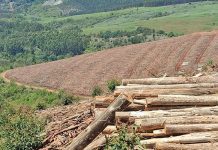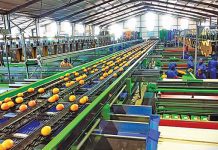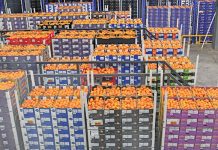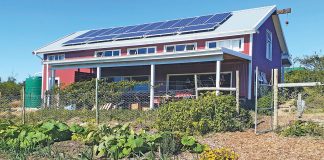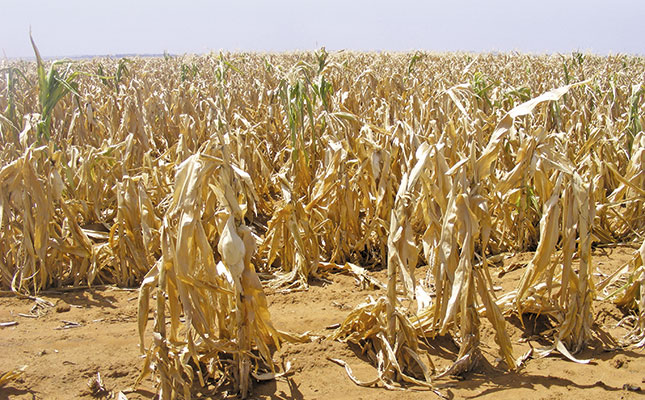
Photo: FW Archive
Agriculture is a risky business. Farmers face multiple challenges, from inputs, weather and crop yield, to harvesting and marketing produce at the right price. This last challenge – price risk – is particularly daunting for smallholder farmers with limited financial backing and skills. Price risk is not unique to South Africa, and we can tap into the vast experience of agricultural producers around the world to see how they manage the risk of getting low prices for their produce.
READ:Transformation: a work in progress
The small-scale farmer can use a futures contract or a put option to manage price risk. Suppose a smallholder farmer (let’s call him ‘John’) plants white maize on his 20ha plot. He knows that he spent about R1 500/ ha, which includes seed,
diesel, tractor hire and labour cost, to plant his crop. But at what price will he be able to sell his maize come harvest in June 2014?
In short, he needs to protect – or hedge – himself against possible losses, as the price of maize is determined by supply and demand and may be so low at the time of harvesting that he may not be able to recoup his costs.
Futures contract or put option?
John can sell a July 2014 futures contract or buy a July 2014 put option. Why July? Well, since he is planning to harvest in June, he needs an arrangement that will protect him beyond his harvesting and marketing period. Selling a futures contract to manage price risk A futures contract is a standardised contract between two parties to exchange a specified asset for a price agreed today with delivery occurring at a specified future date. John needs to have a rough estimate of what tonnage he expects to produce from his plot. This will enable him to determine the level of protection or insurance he has to take out.
Historically, we know that maize yield in dryland production in South Africa is 2,5t/ha to 3t/ha on average. So, for a 20ha plot, a famer can reasonably expect to harvest 50t of maize. Thanks to the JSE’s initiative to roll out 10t mini contracts earmarked for smallholder farmers, John can take out up to five contracts (5 x 10t = 50t) to fully cover his expected crop output.
On 2 January 2014, John contacts his broker and informs him of his intention to hedge his price risk, although he is unsure which option is the best for him. The July 2014 white maize contract on that day is trading at R2 260/t and John’s broker advises him to sell five contracts of July 2014 white maize.
View the latest market indicators
Towards the end of June, the price of the July 2014 white maize contract was trading at R1 809/t, but John isn’t worried, as he secured a selling price of R2 260/t for himself in January, and knows that his production cost was only R1 500/t.
It’s important to note that, in choosing a futures contract, John didn’t aim to get the highest price possible. Instead, he preferred to be certain of the price he was going to get at harvest.
He could also have decided to sell the five contracts over a longer period and, in so doing, achieve an average hedge price.
Buying a put option to manage price risk Put options give the buyer of the option the right to sell the underlying asset by a certain date for a certain price, but the buyer is not obligated to exercise that right, and thus has a choice.
Let’s say that on 2 January 2014, John’s broker advises him to buy five put options to fully cover his crop. This gives John the right, but not the obligation, to sell his white maize crop at R2 260/t. But John needs to pay a premium to secure the right to sell his crop at a pre-determined price in the future.
So he pays the premium of R95,37/t for July 2014 white maize put options.The only difference this time is that John isn’t forced to sell his maize if the price is not in his favour. He has a choice and the peace of mind which that brings. For example, if during harvest the maize price is trading at R2 500/t, why would John exercise his right and sell his crop at R2 260/t if he can go to the market and sell it at the going price of R2 500/t? In this case he won’t exercise his right and will lose the premium of R95,37/t that he already paid, but he will be selling his crop at a higher price.
However, should the maize price be trading at R1 809/t as it did on 25 June 2014, then the put option can be exercised and John would be able to sell his maize at R2 260/t, minus the option premium of R95,37.
Standardised contract
In these examples, it’s important to note that the maize price represents a standardised contract of 10t of white maize grade 1 based at Randfontein. The price does not represent the actual price of maize in Limpopo, North West, the Western Cape or KZN.
The JSE publishes a location differential that should be referenced and deducted from the hedge price in order to understand the worst-case price John will receive should he sell his maize through the JSE. So, if he sold a futures contract at R2 260/t and the differential for the Brits silo is R116, then he can expect a price of R2 260 ? R116 = R2 144/t, excluding brokerage and storage operator handling fees.
Delivery is a non-negotiable
As can be seen, it is possible for smallholder farmers to use available instruments on the exchange to lock in a favourable price. Because of the small size of smallholdings, farmers should organise strong, efficient co-ops to ensure they can meet the volumes required for derivatives trading at the JSE. If you commit to a certain tonnage, you must be able to deliver that tonnage.
Phone Raphael Karuaihe at 011 520 7231 or email him at [email protected].
Visit www.jse.co.za/commodities.
This article was originally published in the 11 July 2014 issue of Farmer’s Weekly.



